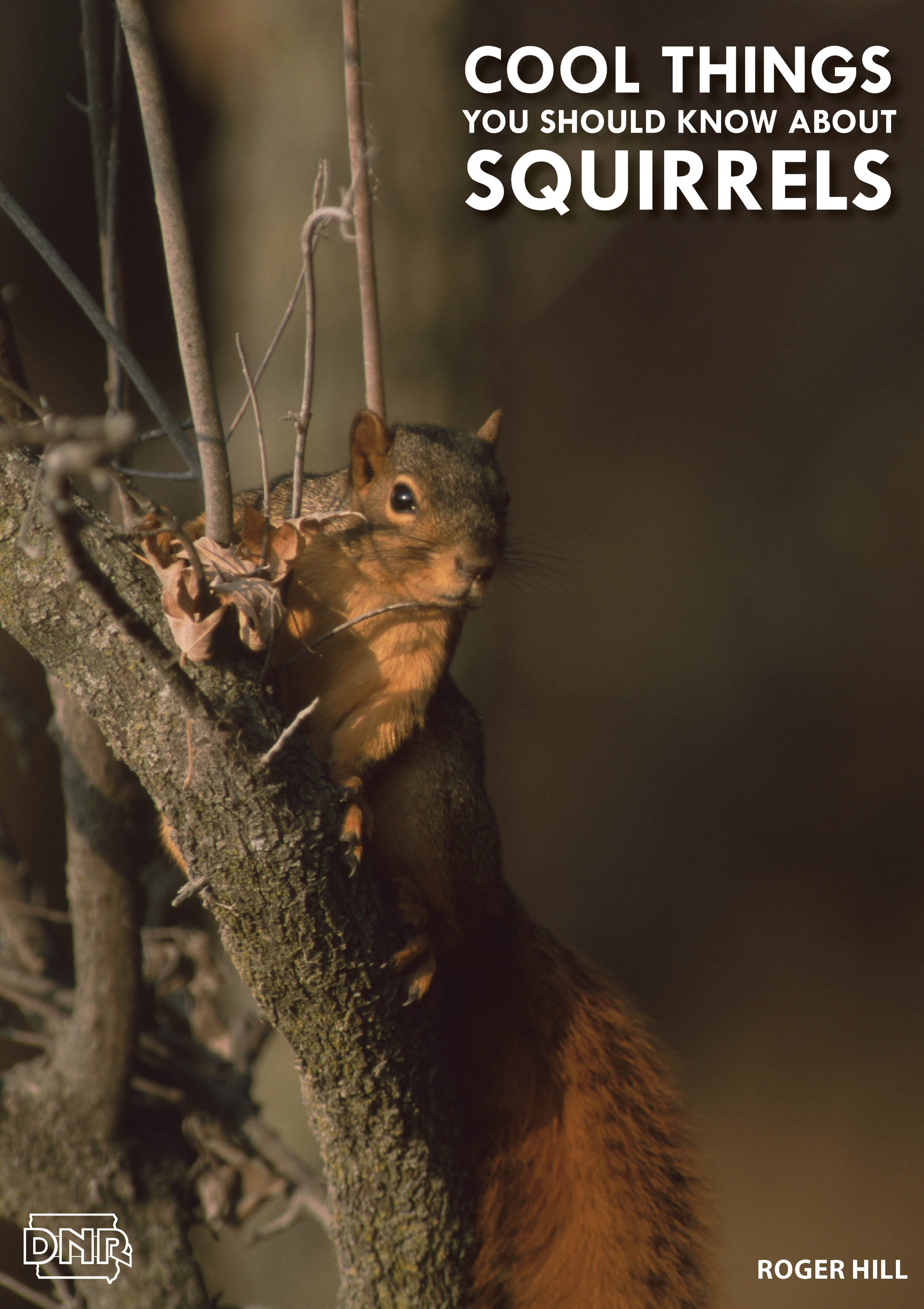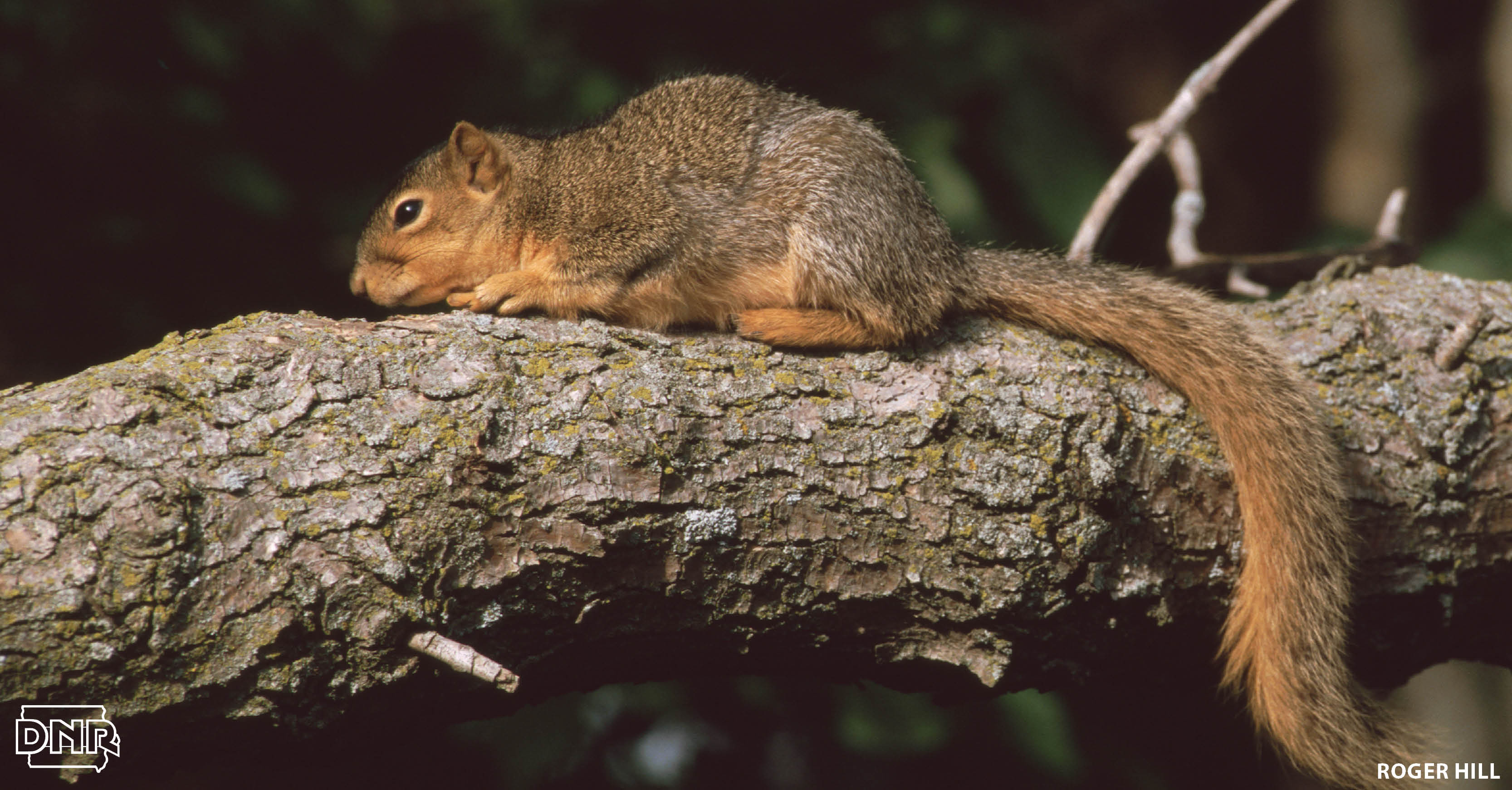 In Iowa it’s hard to go outside without at least glimpsing a squirrel. This nimble and common wildlife family is well known for its acrobatic tendencies and potential as a garden or birdfeeder thief. But do you know all the facts about your fuzzy neighbors?
In Iowa it’s hard to go outside without at least glimpsing a squirrel. This nimble and common wildlife family is well known for its acrobatic tendencies and potential as a garden or birdfeeder thief. But do you know all the facts about your fuzzy neighbors?
Big Family
There are 280 different species in the squirrel family that live throughout the world, 40 of which are American and Eurasian tree squirrels. Another subset of the family includes prairie dogs and chipmunks. The most common tree squirrel species here in Iowa are fox squirrels (Sciurus niger) and eastern gray squirrels (Sciurus carolinensis), but we also have populations of southern flying squirrels (Glaucomys volans), red squirrels (Tamiasciurus hudsonicus) and squirrel relatives like chipmunks and woodchucks, which are common in all counties.
Never Dentures
Squirrels spend a good portion their days chewing on hard things like acorn hulls and pinecones – a person could get a toothache just thinking about it. The squirrels themselves don’t mind because their teeth can handle it. A squirrel’s incisors, the large front teeth, are orange like a beaver’s and keep growing throughout the squirrel’s lifetime. If their top and bottom teeth don’t line up correctly their ongoing growth can cause major health problems for a squirrel such that it may drool excessively or be incapable of closing its mouth, leading to difficulty eating and starvation.
Head Below Heels
Squirrel paws are hand-like, with little primitive thumbs and strong claws for grasping at tree bark. These features, combined with a squirrel’s ability to rotate its hind feet 180 degrees, allow the animal to descend head-first from a tree. This trick is fairly unique among rodents and can be an advantage when avoiding avian predators like owls and hawks. Nimble hands also make it easy for squirrels to steal from birdfeeders, particularly platforms or cage-like models. To prevent a squirrel from getting to a hanging bird feeder, try these suggestions for deterring squirrels from the Cornell Lab or Ornithology.
Feel It Out
Quick and nimble as they are, squirrels could get stuck if they run into tight places too fast. To check out space constraints, even in the dark, squirrels use whiskers not only on their faces, but on their legs. These highly sensitive hairs allow the animal to feel how close the sides of a hidey-hole are and decide how close is too close.
Talk It Up
Contrary to some popular beliefs, squirrels aren’t necessarily quiet. They can produce a range of vocalizations including barks, grunts, squeaks and their familiar chatter. Often located in tree cavities, or leaf nests called drays, squirrels can raise two litters of “kits” per year.
Salad with a Side of Something
A squirrel’s diet includes a lot of nuts, berries, stems, roots and other plant matter. However, they will eat meat and other sources of protein when under stress or as the opportunity arises. This includes bird eggs, snakes, smaller rodents and chickens, among other things. Fortunately, these protein sources are most available in food-scarce seasons like early spring, when few buried nuts are left - and those that are left are sprouting. To look for nuts they’ve buried in the past, squirrels use visual landmarks like particular trees, rocks and streams.
Tail as balance, distraction to predators
Even though squirrels are morphologically similar to mice and rats, people tend to like squirrels better for their fluffy tails. Squirrels use these large fluffy appendages in communication with other squirrels, to make themselves appear larger to predators or distract the predator with waving motions, and for balance when navigating tree branches.
For more, check out our Iowa Wildlife and In Your Own Backyard boards on Pinterest.
